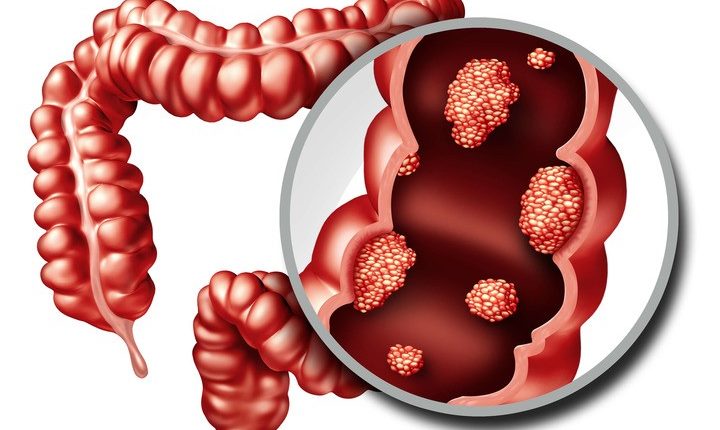
Intestinal polyps: diagnosis and types
Intestinal polyps occur mainly in people over 40. To the eye they appear as irregularities in the mucosa, the inner tissue that makes up the walls of the colon or rectum, but each polyp can vary in shape, size and growth pattern
Although not all polyps develop into tumours, all neoplasms begin as polyps
It is therefore important during colonoscopy to characterise them and especially to remove those that have this degenerative potential.
Intestinal polyps: types and sizes
Thanks to new technologies and endoscopes, which are increasingly advanced in terms of resolution, doctors can identify polyps and in some cases even predict their type.
However, the sure way to diagnose and characterise a polyp is through microscopic evaluation and histological observation: they must then be removed (in part or in their entirety) and analysed.
Colorectal polyps can be classified according to their shape.
Approximately 85% of polyps are ‘sessile’, i.e. dome-shaped without stalks.
In contrast, 13% are “pedunculated”, like a mushroom hanging from the wall of the colon.
Only 2% of precancerous lesions are completely flat.
The importance of endoscopy in the diagnosis of intestinal polyps
The shape influences the ease with which polyps can be visualised by the endoscopist: the stalked polyp is generally well visible, whereas the flat polyp is more difficult to identify because it is so thin that it tends to blend in with other parts of the intestine. In addition, even the smallest remnants of faeces in the belly can often make it difficult to visualise.
This explains the importance of as accurate a preparation for bowel examination as possible, because it allows a more precise colonoscopy to be performed, and all observed polyps to be visualised and removed.
As far as size is concerned, polyps can be less than 5 millimetres and as large as 30 millimetres.
The smaller the polyp, the less likely it is to be malignant: those larger than 20 millimetres are 10% more likely to have modified cells inside them.
Degenerated cells also have varying degrees of ‘modification’ from mild dysplasia to cancer.
The size, together with the shape of the polyp, influences the method of removal: stalked polyps can usually be removed in a single operation, often in an outpatient setting, whereas sessile polyps, especially large ones, may require removal in several fragments or an inpatient procedure.
Conventional adenoma and serrated polyps: differences
In recent years, numerous evidences and studies have shown that the development of colorectal cancer can also occur from a different type of adenoma, namely the sessile serrated polyp.
Seventy-five percent of colon cancers originate from polyps called conventional adenomas (which may be tubular or villous), arising from glandular cells found in the colon.
Serrated polyps account for 25% of tumours.
These are usually serrated, thin, light-coloured protrusions of the colon mucosa without a definite shape, covered with a thin layer of mucus.
These characteristics make them barely visible during colonoscopy.
Intestinal polyps: symptoms not to be underestimated
Colorectal p. have no specific symptoms.
They grow indolent for years and show signs of their presence when they become large or have degenerated into tumours.
This is why a colonoscopy, the only examination that can identify colorectal polyps, is recommended over the age of 50.
It is an invasive examination, but today, with the help of painkillers and sedatives, it can be carried out without particular discomfort for the patient.
The age at which the first colonoscopy is performed can be brought forward if there is a relative who has had a colorectal tumour.
Given the need to gather further information, in these cases a specialist gastroenterological examination is necessary to establish the correct time for the examination and the possible need for further investigations.
Read Also:
Transvaginal Ultrasound: How It Works And Why It Is Important
Rare Diseases: Nasal Polyposis, A Pathology To Know And Recognise



